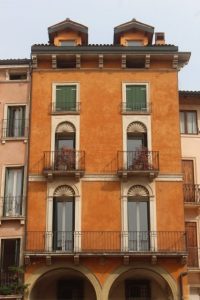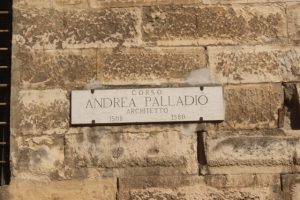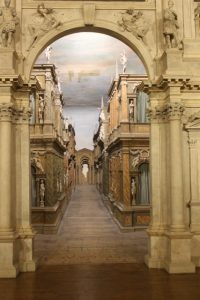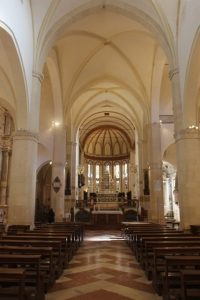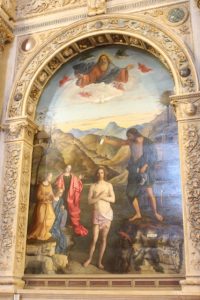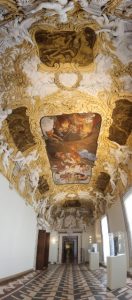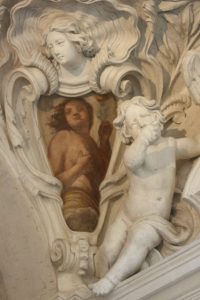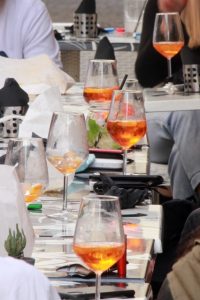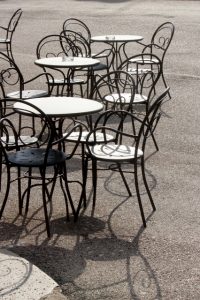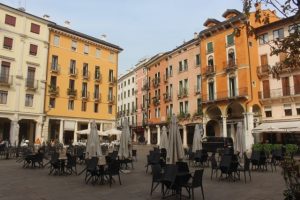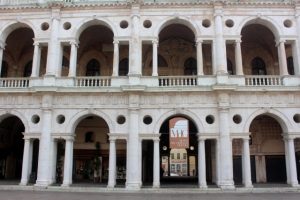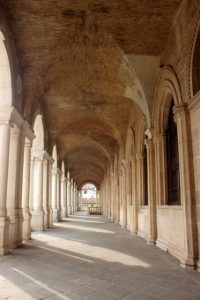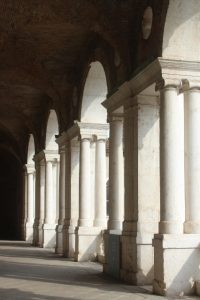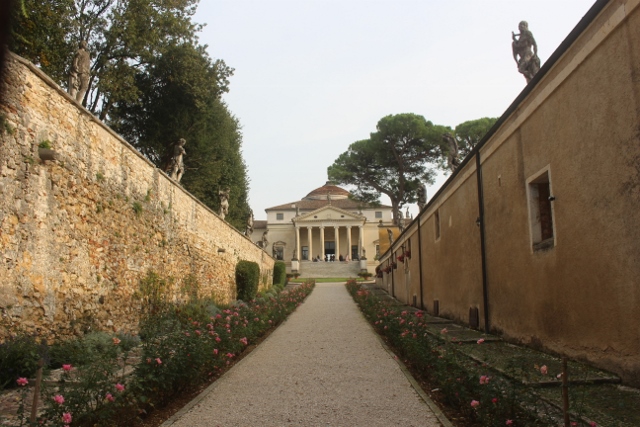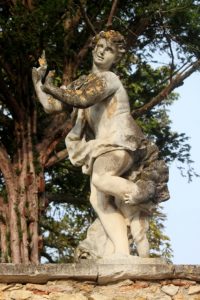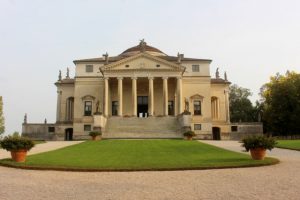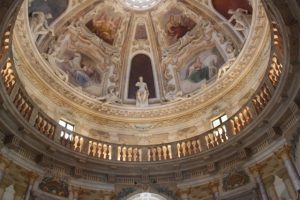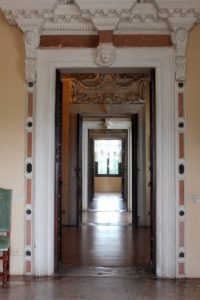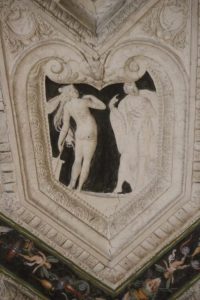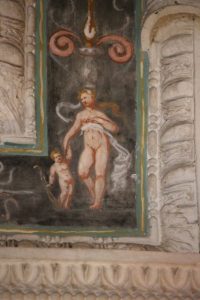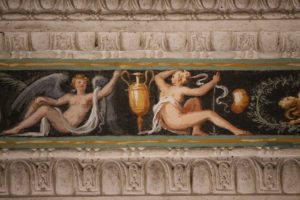Perhaps one of the nicest cities in Northern Italy, Vicenza is all about the architect Palladio, who has had a hand in a wide variety of fabulous tourist attractions – if you like architecture, of course.
Going to Vicenza was a bit of an afterthought. We first thought of going from Verona, by train, for the day – after all, its historical centre is not very big. But we choose to head for Venice instead. But now we have an extra day in Padua, and from here Vicenza is also very close, by train – as long as you get to the station in time, of course.
And how nice is Vicenza! And how varied its tourist attractions.
The focus in Vicenza is Antonio Palladio, the 16th C architect who was instrumental in the design of almost everything constructed in Vicenza. As a relatively young man he built his first villa, so successful that after this the rich Venetians who wanted a second summer home away from Venice, lined up to have theirs designed by the master. In total he may have built some 50 villas, many of those in the Vicenza area. In addition, Palladio designed several town palaces, the outside of the city’s ‘basilica’ (in this case not a religious building, but more a public building for events), and the incomparable Teatro Olimpico.
We started with the latter, in fact Palladio’s last work – it was completed after his death in 1580. It is the oldest covered theatre in existence, in its set up still ancient, with a half-round seating area for spectators, but with a stage complete with trompe-l’oeil background scenery, creating a sense of perspective – an optic illusion – with a painted and stuccoed stage set of the city of Thebes, built for the first performance in 1585 and never removed again. Sitting high up in this theatre is a fabulous experience – never mind the tacky sound-an-light show that is part of the programme.
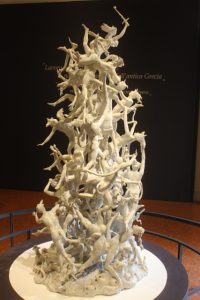
which is also a museum, containing this spectacular marble carving ‘The Fall of the Rebel Angels’, by Agostino Fasolato
Other noteworthy buildings are the Palazzo Chiericati, with its sculptures along the front façade, and the Santa Corona church. The latter contains paintings by Bellini and Veronese, and a chapel designed by, once again, Palladio. But with the most eye-catching structure is a chapel designed by Giambattista and Girolamo Albanese and painted all over with scenes from the life of the Virgin Mary. The Palazzo Leoni Montanari, a few steps down the street from the church, is an ostentatious baroque palace, complete with extravagantly frescoed and stuccoed ceilings and doorways – naked women were a popular subject matter -, as well as a museum with a collection of 18th Century Italian paintings, amongst them a Canaletto. As a bonus, a temporary exhibition on the top floor displayed modern art, some of it from Italian artists, and some of it even quite attractive (Italian and modern art, as far as I am concerned, do not often go well together).
The Basilica Palladiana – the 15th Century public hall that was redesigned by Palladio in 1546 when it was about to collapse – is a huge building, with arched galleries around and a roof top providing great views over the town, and the neighbouring square, de Piazza dei Signori. Which has enough in its own right to admire, with a church façade and a municipality building, as well as several colourful houses that surround the Piazza.
At the end of the day we walked to the outskirts of Vicenze, and admired one of the most famous Palladio villas, the Villa La Rotonda. A truly brilliant design, on a hill overlooking the country side, with identical pillared facades in four directions, and a round patio covered with a cupola in the middle. The house is surrounded by a relatively humble garden, with roses, and lots of sculptures.
So, a full day in Vicenza, so far perhaps one of my favourites on this trip, thanks to the wide variety of things to see. And not in the least, because even without all these things, Vicenza is a charming city, much more playful in its architecture than blocky Padua, or dare I say, pompous Venice is. Glad we had the afterthought!
Next: more villas, outside Padua
